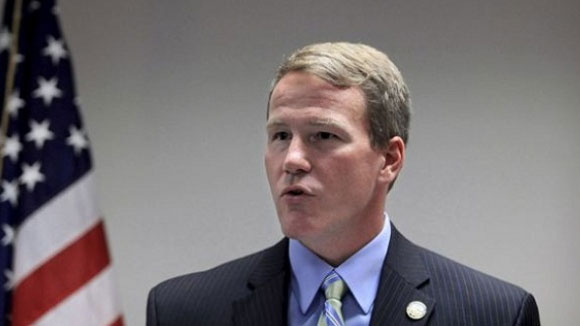The idea that voting should be encouraged, and voter registration simple, has been a touchstone of federal law for decades. That idea is now under assault by Republicans in statehouses across the country and, more recently, in the Trump Justice Department.
On Monday, political appointees in Justice engineered an about-face in the government’s position on a key voting rights case before the Supreme Court, backing Ohio’s efforts to purge hundreds of thousands of infrequent voters from the state’s voter rolls.
You read that right. According to Ohio’s Republican secretary of state, Jon Husted, who is now running for governor, it’s OK for a state to disqualify people from voting in the future if they haven’t voted in the recent past — specifically, in the past six years.
Husted’s crusade in Ohio is one front in a nationwide GOP campaign to suppress voting generally, the calculation being that most of those kicked off voting lists will belong to Democratic-leaning constituencies, especially minorities and younger voters. Seeking loopholes in federal law, Husted and his counterparts are pressing their case for the ostensible purpose of combating voter fraud and maintaining electoral integrity.
Never mind that in-person voter fraud barely exists in the United States and that the integrity of the vast majority of American elections is very rarely in doubt. As the demographic challenges to Republican electoral prospects mount, they have redoubled attempts to retain power where they hold it not by broadening their appeal but by shrinking the electorate.
In Ohio, the tactic has been to mail warnings to registered voters who have skipped elections for two years, and then delete their names from voting rolls after four more years if they aren’t heard from, either by casting a ballot at the polls or making some other contact with election officials.
The policy rests on the bizarre presumption that a voter must have died or moved if he or she fails to cast a ballot in a six-year span. It ignores a general rule in the National Voter Registration Act, enacted in 1993, against removing names because of a failure to vote.
That prohibition, although subject to certain exceptions, prompted a federal appeals court last fall to order Ohio to allow several hundred thousand people to vote in the November presidential elections despite Husted’s attempt to disqualify them. Ohio then appealed to the Supreme Court.
The Obama administration agreed that Ohio’s method of culling voters was unlawful. Now, in a court filing signed by political appointees – but not a single career attorney in the Justice Department’s Civil Rights Division – the Trump administration has reversed course.
A few other states, including Georgia, employ a process like Ohio’s. But there are better methods to maintain “clean” and current voting rolls, such as using change-of-address forms filed with the Postal Service and death notices. In practice, Ohio’s system is a mess, with no uniformity among the state’s 88 counties. As documented by the Cincinnati Enquirer, some counties routinely delete thousands of names from their rolls; others don’t.
The bias in a democracy should be in favor of more voting, not less. That Republicans have taken a different tack reflects their doubts — not about electoral integrity but about their prospects at the polls.
Editorial by The Washington Post
Send questions/comments to the editors.


